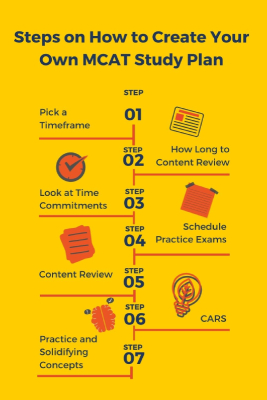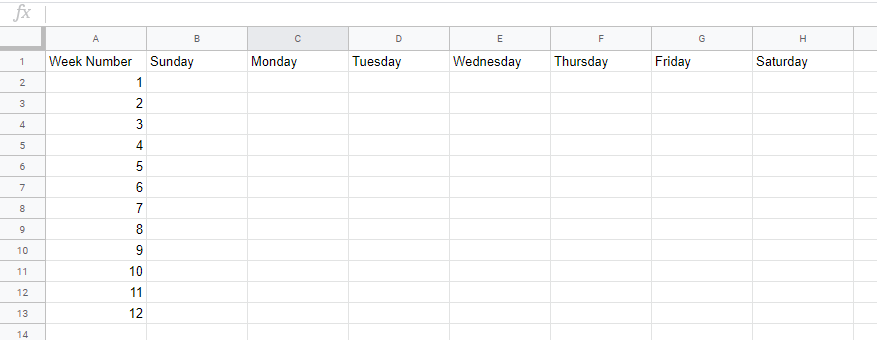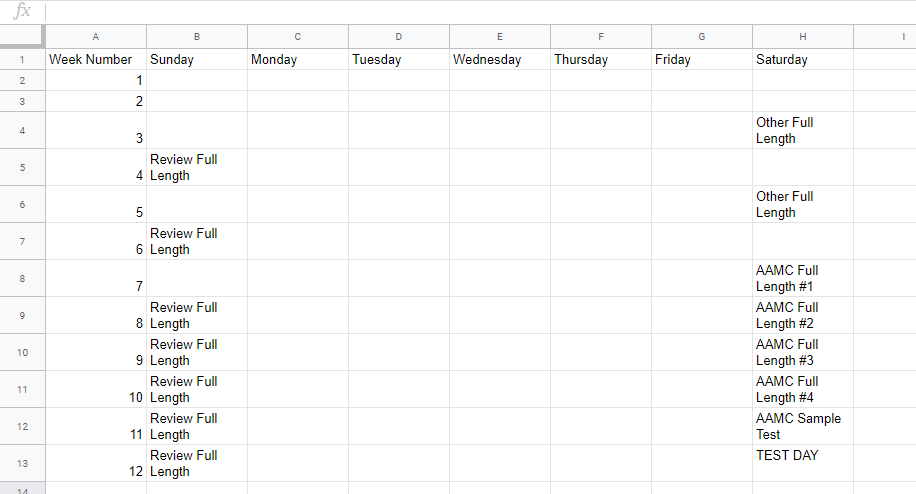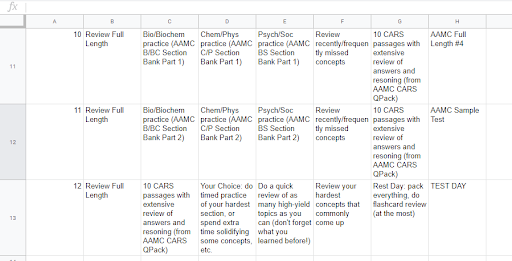Along with your GPA, the MCAT is the most crucial factor in getting into medical school. It is not something you can “wing it.” It takes a lot of work and preparation. This article is written by Alexa Smith, who score in the 99th percentile on the MCAT. In the article, she provides the groundwork for planning your MCAT study schedule to do well.
Here’s Alexa.
Why Are Study Schedules Important?
A study schedule is an excellent way to make a plan for yourself regarding MCAT prep. It both gives you a way to know if you are falling behind and also helps you make sure you save time for all of the prep you want to do.
Without a schedule, you could easily fall behind on content review and end up not having set aside enough full days for practice exams. Or you could end up having to cut content review short and rush through some practice materials before your exam.
With a schedule, you can hold yourself more accountable and systematically approach your studies. This article will walk you through the process of making your MCAT study schedule. This allows you to tailor it to your needs and preferences.

Step One: Pick a Timeframe
The first thing you need to do is decide when you are testing and when you will start prepping. Typical prep time is about 2-4 months.
There is a lot more to get into with deciding when to take the MCAT, but make sure you consider when MCAT scores are due for the medical school application, as well as when you will have enough time to study adequately. This typically means having about 250-400 hours.
Once you have your dates laid out, make a spreadsheet or chart (either physical or digital) to input your schedule. It should have at least seven columns and as many rows as you have weeks to study.

Step Two: How Long to Content Review
Something important to consider is how long you want to do content review versus dedicated practice problems. This decision is also very dependent on your study methods. Consider how you studied and succeeded in your pre-med classes as an undergraduate. If you know that practice is where you learn the best, then plan for more practice time and less content review.
Practice is definitely the most important thing you can do to prepare for the MCAT, so adding in more is not bad. Content review is, however, necessary, so you do need to strike a good balance.
I think it is a good idea to leave about 25% of your study time just for practice problems. This means you will need to finish content review 2-4 weeks before your prep ends. Choose what works best for you, and know that you can always adjust your schedule later if you learn more about what works best.
Step Three: Look at Time Commitments
Next, it is important to figure out how many hours you have a day to study. Take a look at your other time commitments. Are you working full-time? Do you have shadowing or volunteering certain days a week?
Figure out how many hours daily and weekly you are going to commit to studying. As a point of reference, the total MCAT prep time ranges from 150 to 400 hours for most people.
It is okay if your availability changes during your prep. You might have less time at first if you start prepping during the school year. But once summer begins, you can commit more time to study.
Keep these numbers and your availability in mind as you plan out the rest of your schedule.
Step Four: Schedule Practice Exams
Practice exams are vital to a successful MCAT. You need to at least complete the 5 AAMC full-lengths (4 scored and 1 Sample Test).
More practice exams are always better (within reason). So feel free to add in more if you have the time and resources to do so. This is especially true if you know that you learn best by doing and practicing the real thing.
It is also essential to include practice exam review in the schedule. The review is as valuable as doing the practice exams—so do not skip on this. Typically review happens the day after the full length, but if you are operating on a more condensed schedule you may need to review the same day as your full-lengths.
If you have enough weeks, I recommend lining up the full-lengths with one per week leading up to your real MCAT date. You could space out the practice exams earlier in your prep, but you should be doing at least one full length per week towards the end.

Step Five: Content Review
The next step is to begin inputting your schedule of when to do each chapter of your prep books. Figure out how many chapters total you need to get through and how many chapters each book has (the books are typically separated by subject).
Take a look at the timeframe of weeks that you set aside for content review. Then figure out how many chapters you want to do a day.
Remember to leave some extra time or even full days to learn and more deeply study what you learn in the content review. This could happen in parallel with reading the chapters, or you could wait and deeply review each subject every other week, for example.
There is no use in reading through all of this content and seeing lists of concepts to learn and words to memorize if you never set aside time to commit these things to memory.
Once you get a rough idea of how you want to approach content review, start inputting chapters into each day. I highly recommend working through all of the books simultaneously rather than finishing one subject before starting the next. That way, all the subjects are fresh in your mind. If you complete one book after another, you could go a month without reviewing a subject and would forget most of what you learned.

Step Six: CARS
CARS is unique in that it requires no content review. However, you still need to dedicate plenty of time to master this section while in the content review phase.
A common technique is to do CARS every day. This could be even just one passage per day—but do what seems to work for you. CARS is typically a difficult section for people, but some may not need as much practice with it to succeed.
Step Seven: Practice and Solidifying Concepts
The final step to planning your study schedule is to allow time after content review to focus on practicing and solidifying concepts.
You first need to identify all the resources you can pull from for practice. Using some of the online AAMC materials is often helpful, but you can also use free resources such as Khan Academy, or other materials that you may have.
You can then allocate different days to tackling different materials. There are many ways to go about this. You could focus on a different section of the MCAT each day, or do questions by subject. It is important to leave some time for reviewing concepts that you miss as you do all of this practice.
It can also be useful to have an unassigned day or two. You can use these to focus on whatever weak areas are exposed as you do your prep. It also is important to rest the day before your MCAT date. You can still do some light review, but do not push yourself too far so that you are fresh for the exam.

You are now done with planning your MCAT prep schedule once you have accounted for everything! Remember that you are not committed to adhering to this schedule. You can change it up during your studies once you find out what works best. Having a set schedule is just a good way to have some direction and know that you are staying on track.







